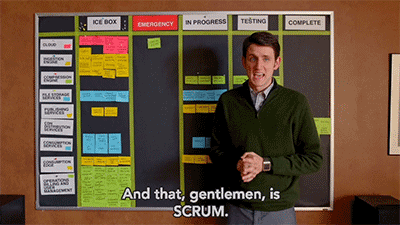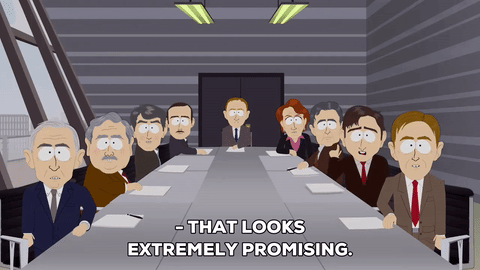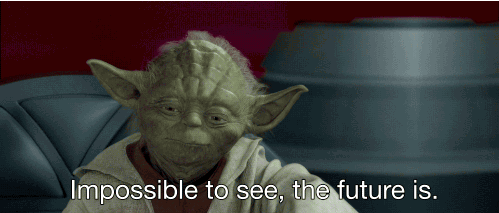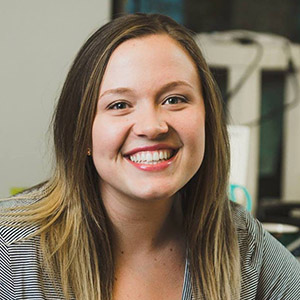The world of tech is so, so cool. And bonus—it’s got a role that is both analytical and creative. How can someone new start working towards a product manager position?
I often tell my product management students that I’m happy to stay after class to chat and answer questions about product. A line forms, and the first question I get (met with a sea of collective nods) is always, always:
“How do I actually get a job as a Product Manager?”

It’s not that I don’t have an answer, but it’s a bit different for everyone.
And somehow, even after a great class, I feel an immediate sense of panic trying to come up with a sufficient, succinct answer on the spot.
Often, I hear from fellow product managers that they just “fell into PM,” but what does that even mean?
Some colleagues tell project origin stories:
- They entered the tech scene as a project manager or admin managing initiative tasks.
- Someone passed them The Lean Startup and they got inspired to work collaboratively in teams towards delivering real customer value to learn from rather than measuring success through large, one-time releases.
Others have long histories of working in waterfall software scenarios:
- They received a laundry list of software requirements handed down by far-off business stakeholders.
- They worked their butts off to hit arbitrary deadlines made up by someone else disconnected from the team.
- Then someone required them to attend an agile class to read up on iterative development and they’ve been delivering value more frequently in smaller iterations rather than releasing too many mistakes too late in the game to pivot.

Sure…yeah.
What if you have a very limited software experience, and barely understood any of what I just said?
You can begin on your own. Psst—you’re in the right spot.
Successful PM candidates need to think about three core groups of people when building software: the product’s users, the software development team, and the business.
The users: Who are the people who want to use this thing?

Software products are often digital tools used by real people.
Successful products are the ones that get used often—the ones that users really like, the ones they’ll tell their friends about, the ones that they love so much that they’ll pay for them.
We need to keep them happy, and the best way to do that is to constantly be in their heads. Know what they need, what they want, and what they’re capable of. This is key to building something they’ll love, because ultimately:
- if they don’t want it or can’t use it, then they won’t; and
- you won’t be sitting next to them to show them what to do.

How many times have you used a confusing app? How did it make you feel?
Show interviewers you’ve got users covered.
- Read the book Don’t Make Me Think by Steve Krug. Start thinking about digital interfaces you know about and what makes them memorable or easy to use. The book has lots of great illustrations of design elements and easy conversational language to help explain key design concepts, like how to organize information.
- Learn about how to map out a potential user’s journey.
- Check out the Google Ventures Design Sprint to see how to take mere ideas to validated usability tests without building anything—in just one week! Be very familiar with user interview techniques.
- Read about customer support roles. Turns out, CSRs and PMs have a lot in common! They can learn the ins and outs of a product and advocate for it—but they can also learn how user minds work, see what problems they run into, and figure out how to help them. Empathy, y’all.
- Extra credit: Get paid for your opinions on survey and usability testing websites like MintVine, UserTesting.com, and UsabilityHub—these are great because you get a chance to see what products real companies are working on and what they’re trying to test. (Plus, it definitely doesn’t hurt to get familiar with usability processes.)
Be able to answer:
- How can I make sure this product will solve user problems? Will people want to use it?
- How can I know users will be able to understand the product on their own? Will people be able to use it?
- How can I prioritize which outcomes users will want next?
- What does a user journey look like from start to finish? Where does our product fit, and where are the gaps?
The development team: Who is going to build this thing?

Someone’s got to execute your plans for the product.
As a PM, you’re going to have to communicate effectively with your development team—this could mean user experience researchers or interaction designers on the visual side, but it could also mean engineers and architects on the technical side.
Enhanced teamwork is crucial here, as well as the management of tangible artifacts for the team to use as blueprints for what to code. The good news is there are already a couple proven methods to use to work together efficiently, including:
-
short working cycles that allow for collaboration across different types of team members (e.g., strategic, visual, and technical), revisiting plans constantly to adapt to new things you’ve learned; and
-
planning to release chunks of truly finished work with enough thought and detail for everyone in charge of implementation to “get it.”
Show interviewers you’ve got the team covered.
- Get nice and cozy with agile software methodology. Learn about the differences between agile and waterfall, review the meeting ceremonies, common roles and their responsibilities, and artifacts used.
- Look into a scrum certification to boost your résumé. This is a two-day course with an online certification test at the end. Pricey, but worth it to prove you understand concepts for how to work with a functional team (especially without hands-on experience).
- Think big/medium/small. Think about the larger outcomes you’d want to deliver for a user, then consider how to break those up into product feature ideas, then finally practice writing detailed user stories that your team will use to build the actual pieces of functionality. You don’t have to be technical, honestly, but it helps.
- Learn about different project management tools like Trello, Jira, or Pivotal Tracker to organize your product’s to-do list.
- Try your hand at sketching out your feature ideas on paper, and learn the differences between that, wireframing, and prototyping. Learning how to visually articulate a user’s action flow to your team will help immensely.
- Extra credit: Read the book Extreme Programming Explained by Kent Beck to learn about my absolute favorite flavor of agile.

Pied Piper gets it.
Be able to answer:
- How can I clearly communicate the product vision to designers and engineers?
- How should I break the work down into feasible, manageable slices?
- How can I best trust and enable my team to implement product features?
The business: Who will keep this thing going?

There’s value your product is delivering, and it’s probably correlated to some type of revenue or business goal.
Businesses spend oodles of money on researching and developing new products to help reach their goals. They will often provide guidance in the form of “requirements” that you’ll need to handle and prioritize against what you’re hearing directly from your users.
If your product can achieve and exceed the business goal it was set to accomplish—and you can prove it—well, that’s what success looks like!
If not, you’ll need a way to come back to the stakeholders—the people who “hold a stake” in the success of your product—and not only give them reasons to continue investing time and money on your efforts, but clearly set and manage expectations about what changes you’ll make next. You’ll need:
- a way to prioritize and forecast upcoming value to manage your stakeholders’ expectations for what will happen next with your product (and why); and
- an understanding of how to predict and measure success towards the defined business goal(s).
Show interviewers you’ve got the biz covered.
Be able to answer:
- Will this product provide value for the business? How can I make sure we get a return on our investment?
- What can I do to measure success for reporting on business goals?
- How can I set appropriate stakeholder expectations for future feature releases?

Preach, Yoda.
- Visit these websites with absolutely amazing content: UXPin eBooks, Intercom Books, MindtheProduct, UXDesign.cc, Smashing Magazine, Fresh Tilled Soil, Product Coalition, Product Manager HQ, and—(shameless plug)—Product Labs on Medium by Pivotal Labs.
- Be on the lookout for up-and-coming products: Check ProductHunt and (seriously) the Apple App Store to stay updated about what’s happening in the tech space (and read the product release notes)!
- Join product Slack groups: PMHQ, Product Tribes, Product Coalition, MindtheProduct, and ProductStack.
- Subscribe to product podcasts: The Pitch, This is PM, How I Built This, 100PM, Inside Intercom, and That Moment.
- Follow my personal favorite UX, agile, and PM greats: Jared Spool, Andy Budd, Krystal Higgins, Joel Beukelman, Mike Cohn, Marty Cagan, Julie Zhou, John Cutler, and Roman Pichler.
- Consider formal product training: General Assembly has Product Management and Agile Software Development courses—I teach them both and I think they’re pretty great. GA also has Design and UX courses. The Nielsen Norman Group has a bunch of interesting training, and then there are degrees in Human-Computer Interaction. Did you know Carnegie Mellon is offering its very first Masters of Science in Product Management this January 2018? The course is a year long, and it’s $65,000. Whew!
- Agile resources: Mountain Goat Software, AgileAlliance, ScrumAlliance
Now that you’ve made it this far… start thinking about how your background and experience translates to a PM career. Check out this post about how to land the interview.
Feel free to reach out with any questions you still have, and we can chat. Remember me once you’re a rockstar PM and let me know what resources you think should be added to this list.
Happy product managing! You’re going to crush it.
Kate Griggs is a Product Manager at Pivotal Labs #ATL obsessed with everything product. When she’s not building lean with a balanced team or teaching about agile dev at General Assembly, you can find her chasing down LOST theories and filming locations, watching Hokie Football highlights or gallavanting around midtown Atlanta. Check her out on Twitter.
This post originally appeared on Medium.






![]()

